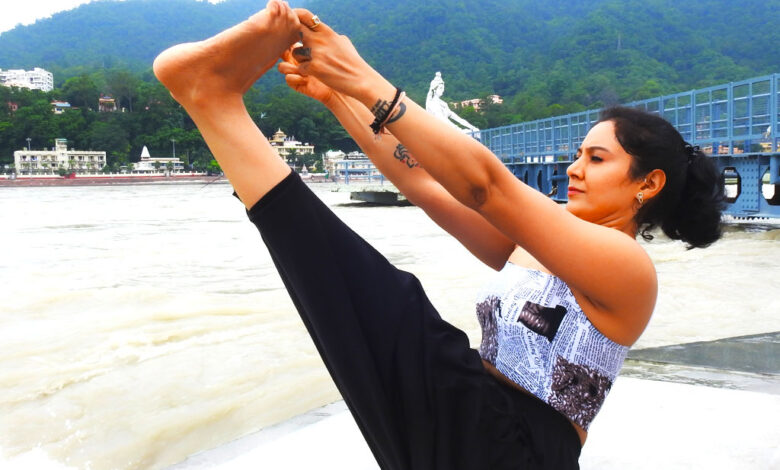Yogic Management of Asthma

Table of Contents
Yogic Management of Asthma
Asthma is a common and distressing condition characterized by repeated attacks of spasm in the lung tubes, wheezing, coughing, and a sense of suffocation. Large airways (bronchi) become clogged with castors and excessive, chick mucus secretions Produced by the cells lining the airways.
Asthma attacks may last only a few minutes, continue for hours, or even days, leaving the sufferer in a state of physical, mental, and emotional exhaustion.
In rare and extreme cases, when the condition is known as static aerobatics, asthma can prove fatal.
An asthma attack can be a terrifying and exhausting experience for both the sufferer and his family members.
Signs of an impending Asthma attack
A few hours before its actual start and in addition to many, as a rule, are stable and we have identified stems from bouts of patience for each individual Kozmopali.
They can be caused by psychological stress, emotional exercise, diet, by exposure to airborne allergens. appear, and the lips and face are swollen, indicating that the level of emotional or immune stress is rising to a level
Where the crisis is about to come. Most patients with asthma have a sudden onset of cold symptoms, such as runny nose, runny nose, and sneezing, indicating that the mucous membrane of the nose is becoming swollen and secreted in response to a psychological or environmental trigger.
As the attack progresses, there is increasing shortness of breath (air hunger), which makes respiration more and more difficult, leading to increased subjective distress and anxiety.
The mucus secretion becomes thick and viscous and leads to a moist cough.
The chest becomes hyperexpanded and the lungs hyperinflated. Termination specifically demands sustained muscular effort to overcome the additional resistance of
Thick viscous mucus clogs the respiratory tree. The patient can release it with partially clenched lips or by whistling, as this increases the pressure of the trachea Lungs.
As the attack continues, the mucous membranes may turn blue, indicating that not enough oxygen is entering the body.
An untreated attack usually continues in a vicious cycle. The longer the victim struggles to breathe, the longer the attack continues and the more severe it becomes.
The more severe the attack, the more upset and anxious the victim is, and the less able to relax.
long term complications
Asthma complications increase with the duration of the disease. The body becomes weak and weak. Asthmatic children usually lag behind their peers in body
Weight and Height. In addition, posture defects, with a permanent extension of the ribs and hump of the shoulders, usually accompany long-term asthma.
Therefore the ability to fully enjoy an active life and participate in normal social and personal relationships is reduced as the asthmatic patient is forced to lead excessively.
There is clinical evidence that addressing both of these issues will help reduce the severity and frequency of attacks. Poor immune function, exposure to it can worsen inflammation
Deficiency of allergenic food and anti-inflammatory nutrients. These include vitamin C, B complex, zinc, calcium, vitamin D3, and quercetin. Another major anti-inflammatory
The substance is omega-3 fatty acids, ideally derived from oily cold-water fish, such as tuna, sardines, as well as cod liver oil, and flaxseed oil. To reduce the degree of bronchospasm, increase the intake of magnesium.
Yogic Management of Asthma
Complete and permanent drug-free recovery is possible only with consistent and regular daily exercise. It is not possible to get permanent relief or treatment in an asthmatic patient who has constipation.
To cure the disorder in these cases it is first necessary to remove constipation and increase the digestive heat in the body.
Yoga Pose Asana of Asthma:
Those whose bodies are stiff should first practice
The following yoga Pose relieves constipation from the intestines, lungs, and mind.
- Pawanmuktasana series for a few weeks.
- Then commence some of the following:
- Hasta utthanasana, dwi konasana, marjari-asana, shashank bhujangasana, dhanurasana, pranamasana, kandharasana, simhagarjanasana, baddha padmasana, lolasana,tolangulas.
- makarasana, gomukhasana, sarvangasana, matsyasana, parivritti janu sirshasana. Yoga Teacher Training in Rishikesh will be the foundational stone in your journey to advance your Yoga practice and to feel acquainted with different layers of Yoga & Science
If you are looking to bring a change into your life by learning yoga for self-rejuvenation or transfer the benefits to others, by getting a professional certificate and expertise 200 Hour Yoga Teacher Training in Rishikesh, India


